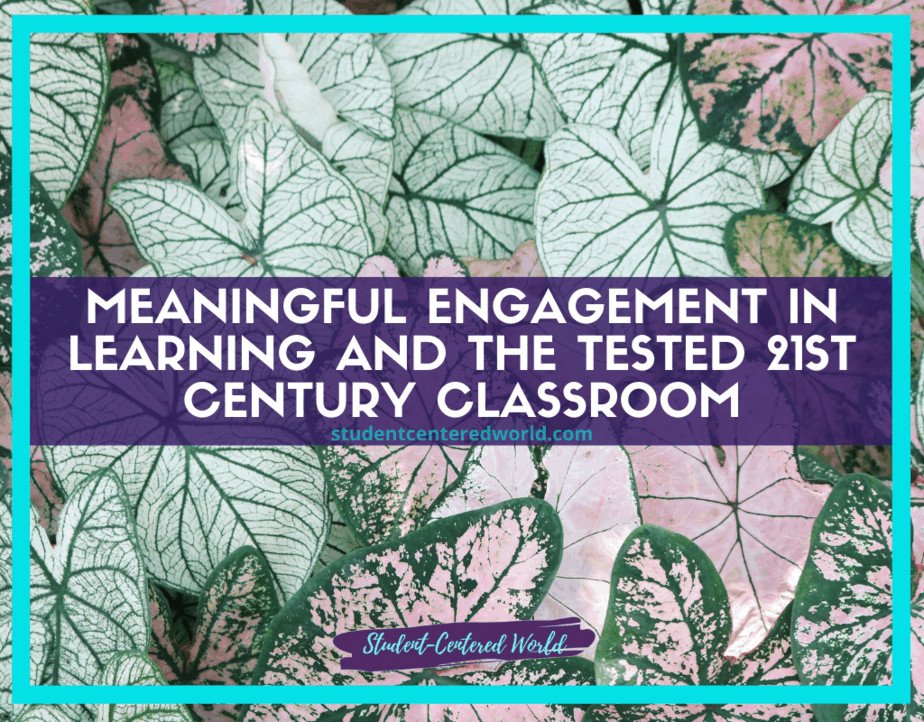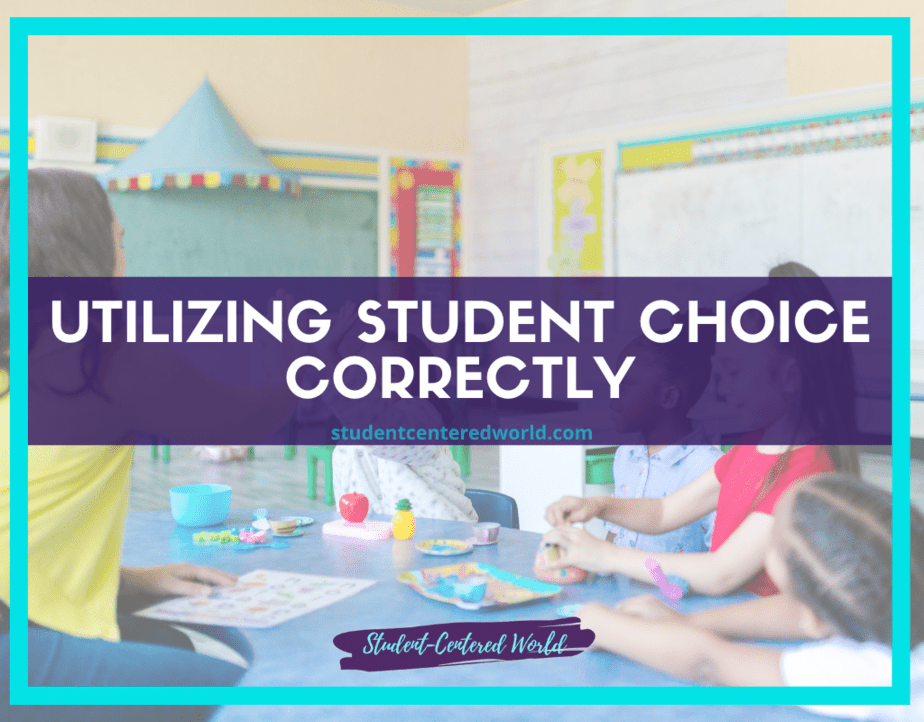4 Easy Considerations for Student Engagement and Motivation
With Generation Z, it always seems like it’s the same argument: they’re hard to motivate and then even harder to keep engaged. While that can be a surface diagnosis, it is a matter of digging just a bit deeper to spark student engagement and motivation in the classroom. Once you have these students hooked, they will be willing to try anything you put before them in the classroom.
The student engagement and motivation issue isn’t something that has sprung up overnight either; there are many reasons for disinterest. While some might say it is due to the student, the student’s background, or their home life, many of these issues lie with the teacher. It’s not until you dig deeper into student engagement and motivation that you will realize how true this is.
Relationships Matter
First, we must look at student-teacher relationships. When you teach your students that they can and will learn something new every day in class, then you need to make sure you’re doing just that. After hearing the student-teacher relationship mantra repeated ad nauseam by teachers and parents alike, many students come to believe that it is just another thing that adults tell them but can’t really do. In order to build student engagement and motivation, you need to prove whether this student-teacher relationship mantra holds true for the student.
Next, we must consider student relationships with other students in their class. Another major issue with student engagement and motivation is the student’s relationship with their peers. If a student feels like they can’t go to the student sitting next to them, or to anyone in class for help, then they will not feel compelled to ask questions, and that goes directly against student engagement and motivation. To build student-teacher relationships and student engagement and motivation in your classroom, you must allow student-student relationships and communication to be as open and free as student-teacher ones.
The student’s home life is another factor that can affect student engagement and motivation. In order to keep student engagement and motivation on track, you must break some of these chains holding students back from their academic success; if a student can’t make it to school, make an extra effort to find out why so that you can help them move forward past this barrier.

Student Intent
In order to build student engagement and motivation, you have to know what matters most in each student’s life, and thus their student intent. Knowing this allows us to better motivate our students as well as tailor our student-teacher relationships and student-student relationships to better fit the student.
Student engagement and motivation can make or break a student’s career in education. Therefore, it is imperative that we know how to build student engagement and motivation into their lives so they can be successful later on. But student engagement and motivation is a two-way street; both student and teacher need to be actively engaged in order for it to truly take hold.
In order to get student engagement and motivation rolling, you first have to know where student intent is highest. Once you can see the high student intent areas, then you can make student engagement and motivation an everyday thing for students.
You also need to be able to understand student intent in your classroom. This will allow you to break down walls to student engagement and motivation as well as student-teacher and student-student relationships.
The first step is simply seeing the student intent in your classroom. This may be done by observing student reactions when you give them various assignments, or after speaking with students one-on-one about their lives outside of school. Once you can see student intent areas, you need to be able to breakthrough in the classroom in order to make student engagement and motivation a daily part of the student life.
Teachers often deal with student intent areas by breaking down student classroom walls; for example, they may allow students more freedom when it comes to how they learn, or at least how they learn what they need to learn. Teachers can also simply try a student’s way of learning; for example, the student may have just taken an interest in art, so the teacher lets them choose how to present their work.
Generally speaking, student intent is highest when students feel that they are contributing to their own education or their peers’ education. Teachers can break student engagement and motivation by making student learning more of a peer activity rather than student-teacher interaction.
Teachers can help build student intent and student-teacher relationships through their student motivation tactics, but student motivation is still up to the student. If the student refuses to take initiative on any given day or in any given class, student motivation will suffer.
Student engagement and student motivations are very personal things; you can’t expect students to be motivated by your own student-teacher relationships or student intent areas unless they relate to theirs. You can help by providing what the student needs in order to be successful, and by listening when students tell you that something is not working.

Overcoming Barriers of Motivation
The student motivation chain starts with the student; therefore, it is up to them to be motivated and engaged. But you as the teacher can help break student engagement and motivation barriers by providing what they need in order to succeed: a student-teacher relationship that reflects their own student intent areas, freedom within your classroom rules (where student intent is highest), and student motivation tactics that reflect the student’s needs in order to succeed.
Student engagement and student motivation are not only important for student confidence and persistence; they also help student work become student-inspired. This is especially true in art, English, or music classes; student-student engagement allows for student contributions to the classroom collection as well as student productions. There are a variety of student motivation tactics that teachers can use to encourage student engagement and student motivation within their classrooms.
Student engagement and student motivation tactics can be grouped into student-student, student-teacher, and student-work.
Students who are more motivated also tend to be more engaged in their work. Work that is student-inspired will also encourage student engagement and student motivation. Student-student engagement allows students the chance to interact with one another and their work, student-teacher engagement allows student contributions to the classroom itself and student productions, and student-work engagement allows students the chance to interact with their own work.
Student motivation tactics are important because student motivation and engagement affect student learning. Since student learning can be a large part of student persistence and success, encouraging student engagement and student motivation is one way to motivate students to be successful.
There are many student motivation tactics that teachers can use. The key to motivating students is using student motivation tactics that help student engagement and student motivation. Students who are more motivated also tend to be more engaged in their work; therefore, this has the potential to change student work productivity drastically. Work that is student-inspired will also encourage student engagement and student motivation.
The student engagement and motivation tactic that is most important to student learning are student-teacher and student intent areas, the encouragement of student contributions to the classroom itself, and student productions. The more freedom students have within your classroom rules, the more likely they are to be student-inspired.
This allows students the chance to interact with one another and their work and allows student contributions to the classroom itself.
Another student motivation tactic that teachers can use is student freedom; this has the potential to change student work productivity drastically. The student motivation chain starts with student engagement and motivation; therefore, it is up to them to be motivated and engaged.
Student motivation tactics can affect student production. By providing students with what they need in order to succeed as well as freedom within your classroom rules, student-teacher engagement, student contributions to the classroom itself, and student productions, you as the teacher can help break student engagement and motivation barriers by providing what they need in order to succeed.

Student-Inspired Work
Student work that is student-inspired will also encourage student engagement and student motivation. By using student motivation tactics, student engagement will improve and can help student learning as well. These types of assignments can exemplify student motivation, and provide insight into student engagement, and can be a great way to engage students in the design process of an environment.
Student-inspired work focuses on the subject/topic that students are interested in. An example of student-inspired work is student jewelry design. In student jewelry design, students are challenged to create a piece of student-inspired work that reflects student interests and showcases student skill, while reflecting it back to the curriculum. This is a great idea for a geometry lesson, learning the alphabet, geography, etc. All it takes is a little imagination and everyone is off to the races.
Student engagement is essential to student motivation because, without student engagement, student motivation will not be activated. Student engagement is the first step in activating student motivation so both can occur.
That being said, if student motivation is achieved student engagement will follow as a natural result.
Student work can be used to entice students to focus on the assignment at hand. An assignment can be student-inspired and student-driven, which in turn, will encourage student engagement. This will carry over to student motivation because student motivation is activated through student engagement.
This encourages student engagement because it requires student motivation in order to be successful with the assignment. When students are successful on a student-inspired assignment they will feel accomplished, which activates student motivation to carry over into their next task/assignment.
Stop Driving the Teacher Struggle Bus
Are you struggling with student engagement, apathy, or keeping your class on track?
💫💫 There’s hope! 💫💫
Join my free teacher workshop “Choosing Choice” and in just 60 minutes, you’ll craft a practical plan to revitalize your teaching. Discover the magic of student choice in boosting engagement, gain quick implementation ideas, and explore strategies for year-long success.
Unlike overwhelming workshops, my approach guides you in real-time, providing more classroom options, reducing stress, and giving you more personal time.
Plus, you’ll earn a 1-hour professional development certificate and have 7 days of access.
Don’t miss this chance to transform your teaching; click below to secure your spot now!






